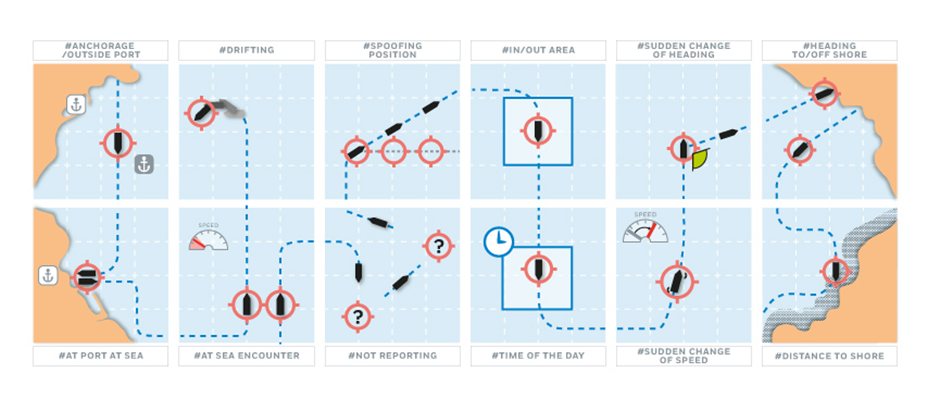Automated Behaviour Monitoring
Automated Behaviour Monitoring algorithms (ABM) are IMS tools which analyse ship position reports for the detection of specific or anomalous ship behaviours. The algorithms reduce the workload of users by automating the analysis of ship positions and providing related alerts.
Operational since 2015, ABM have been used by Member States in various scenarios related to safety, security and environmental protection. They support maritime surveillance operators by enhancing situational awareness and providing automated alerting. In addition to Member States, ABMs are also assisting EU bodies and agencies (EFCA, EUNAVFOR, EUROPOL and Frontex), as well as international bodies such as MAOC-N.
Currently ABM offer three types of capabilities:
- ‘Near real-time’ algorithms (NRT-ABM), detecting specific or anomalous behaviours and alerting users within approximately fifteen minutes;
- ‘Historical’ ABM (H-ABM) on-demand, detecting events in the past for a user-configured scenario;
- ‘Historical’ ABM (H-ABM) always-on, where events are continuously detected and recorded at global level (e.g. port calls, ships drifting, STS, gaps in reporting, ships with defined speed thresholds), or voyage related changes like ETA or Destination change. This forms a database of events where algorithms use archived position reports or alternatively a database of specific, detected situations and events such as the global detection of port calls.
As ABM algorithms analyse position reports for the detection of specific or anomalous ship behaviour, they can be helpful in vessel tracking and monitoring for verifying reporting obligations, or providing early warnings about potentially dangerous situations affecting the safety of navigation.
The main objective of the ABM algorithms is to detect and alert on anomalous or specific ships’ behaviours, reducing the workload of the operators, as the time-consuming analysis of tracks or positions is fully automated.
Certain behaviours (e.g. drifting, sudden change of speed and heading, transponder switch-off, avoiding most common routes, etc.) may indicate a danger to navigation, maritime safety, security, the environment, or even indicate potentially illicit activities.
ABMs can be provided to the IMS users via all existing interfaces – graphical web browser based SEG, IMS Mobile App, or via a set of APIs and webservices.
Related Workshops
- Automated Behaviour Monitoring and Advanced Analytics - Workshop 9
- Automated Behaviour Monitoring and Advanced Analytics – Workshop 7
- Automated Behaviour Monitoring and Advanced Analytics – Workshop 6
- Automated Behaviour Monitoring and Advanced Analytics – Workshop 5
- Automated Behaviour Monitoring - Workshop 4
- Automated Behaviour Monitoring - Workshop 3
- Automated Behaviour Monitoring - Workshop 2
- Anomaly Detection Systems and Automated Behaviour Monitoring (ABM) workshop




